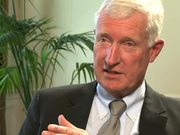Abell-model - customers, functions, technologies
I was working as a consultant with a US-based company. They were in the semi-conductor manufacturing business - they made machinery, actually - and they were also in laboratory equipment and so on. I was part of a taskforce. I remember very well. I went every week to join this group of managers in Chicago. They were trying to figure out how to define their product and service line and their market. Everybody would go on about products and markets and they had long lists of products and long lists of markets. I wasn't happy. There was something that didn't quite add up in this way of looking at the world. I started to think about what was behind that. What were these products? They were only manifestations of something more fundamental and these were essentially three things. Which customers do you serve? How do you define your customer groups? How are they segmented? This was an important dimension. I understood right away that segmentation was really important in this story. Before you figured out which products, you'd better figure out which segments. So customer groups was one.
And then, because of this semi-conductor manufacturing story, this particular company was suffering badly because they had one piece of the manufacturing line, but they didn't have other parts. The Japanese came to the market with a system. So I started to think it was about the functions you provide for the customer. This Japanese competitor was providing a set of functions. My company was providing one function and we were getting blown out of the water. The width of the functional definition of the business was really important.
The third was, I was working at GE at the time, in the medical systems division, and there I was aware that they were in multiple technologies for imaging diagnostics. They were doing x-ray machines and they were getting into computerised tomography and MRI and all kinds of things. I thought that was interesting. Some companies just come to the business with one technology and others try to span all of the possible alternative technologies. This was the origin of these three dimensions. You define a business - at least in the horizontal, not the vertical - in terms of the customers you serve and how you segment the market in terms of the functions you provide and in terms of the technologies that you decide to cover.
There are wide differences. I saw right away - and I looked in a lot of other businesses then - that you could understand how competition worked by understanding these different definitions. Some were narrow, narrow, narrow: very fine segmentation, only one or two functions, one technology. Other companies were wide, wide, wide. Some companies were wide in customers but narrow in functions. I started to understand why some were winners long-term. And this has lasted, I have to say. But the insight didn't come from sitting in a library, reading books. It came from getting out there with practitioners and trying to figure out what they were doing.

